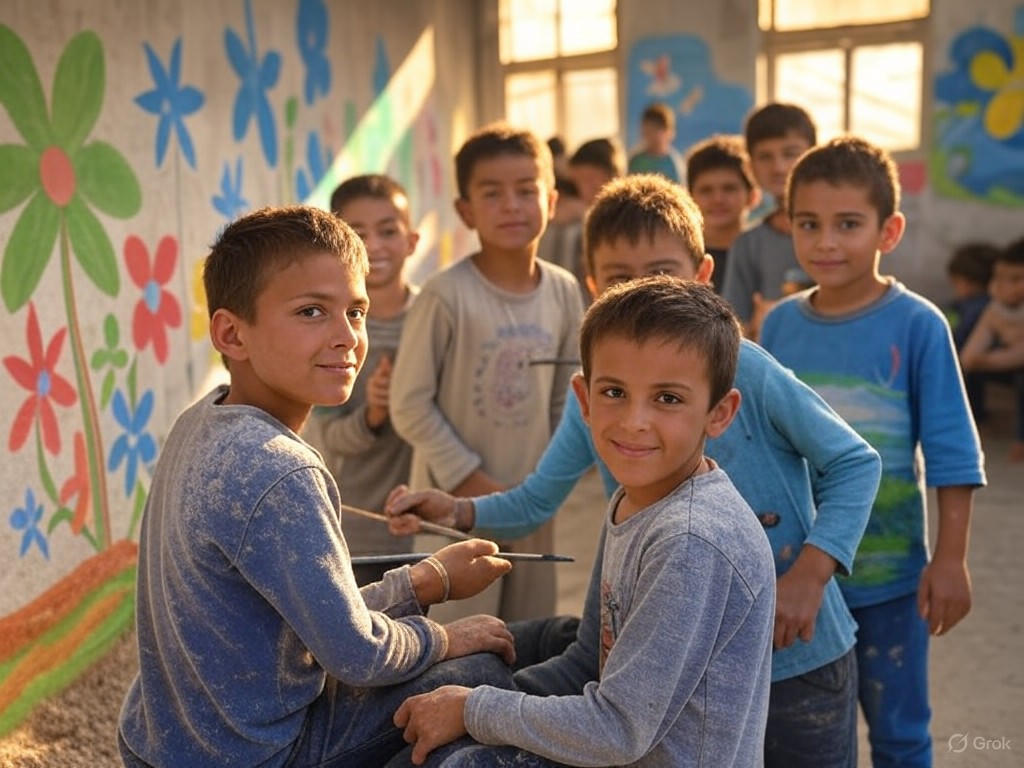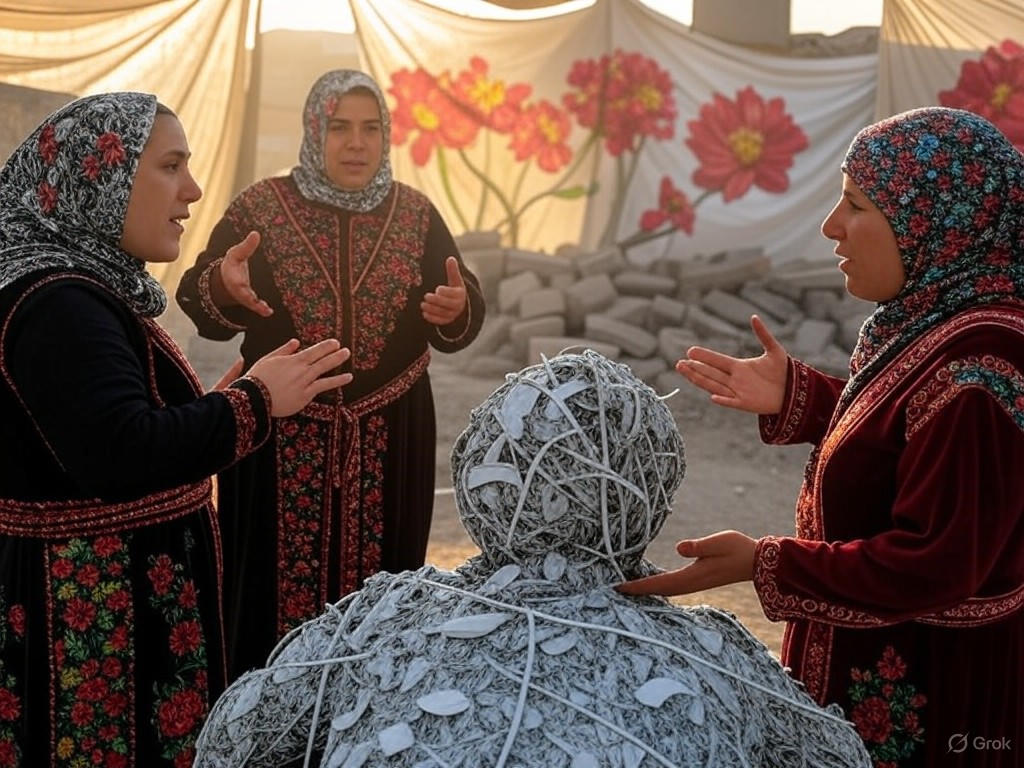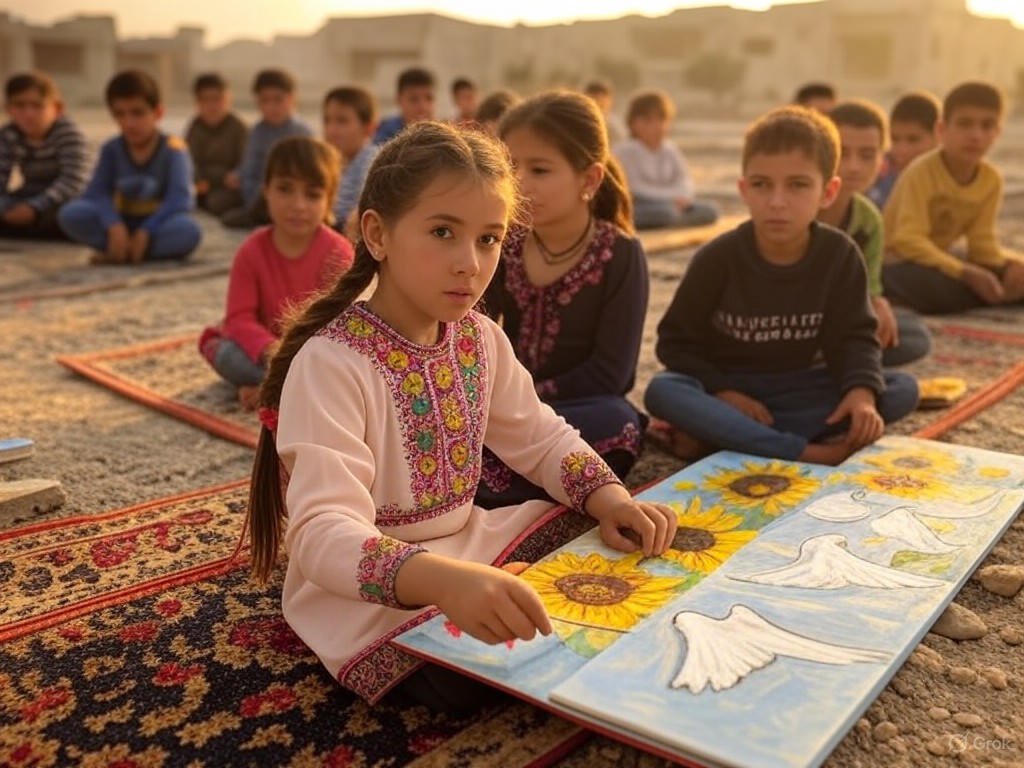Art Therapy in Syria: Healing Through Creativity
In the shadowed valleys of a war-torn land, where the dust of shattered homes mingles with the echoes of forgotten dreams, we witness the quiet resilience of the human spirit. Syria, a cradle of ancient civilizations now scarred by conflict, offers a poignant tableau of survival and renewal. Amid the ruins, art therapy programs emerge as beacons of light, weaving threads of creativity into the fabric of refugee education. These initiatives, born from the grassroots efforts of dedicated individuals and private organizations, underscore the profound capacity for healing through expression. Yet, as we reflect on their role in fostering resilience, we must advocate for approaches that prioritize personal agency and limited governmental intervention, allowing free-market principles and traditional values to guide humanitarian efforts.
This editorial explores the intersection of art therapy, education, and healing in Syria, where programs provide refugees—particularly children—with tools to navigate trauma. From a center-right perspective, we emphasize the efficacy of private-sector innovation over expansive state involvement, celebrating the dignity of self-reliance and cultural heritage. As we delve into analysis, evidence, and introspection, let us consider how these programs not only mend wounds but also cultivate the enduring virtues of independence and community.
The Poetics of Healing: Art Therapy in the Syrian Context
Art therapy, a modality that transforms canvas and clay into vessels for emotional release, has found fertile ground among Syrian refugees. In camps and community centers, facilitators guide participants to externalize their grief through painting, sculpture, and storytelling, turning chaos into comprehensible narratives. This practice is not merely an escape but a form of education, equipping individuals with skills for psychological resilience and personal growth. Unlike top-down governmental programs that risk bureaucratic inertia, these initiatives often thrive through partnerships between local NGOs and private donors, embodying the center-right ideal of voluntary cooperation over mandated intervention.
Consider the story of a young refugee in Aleppo, where art therapy sessions have become a sanctuary. Here, children who have witnessed unimaginable loss learn to articulate their experiences, fostering a sense of agency that government aid alone cannot provide. This approach aligns with traditional values, drawing on Syria's rich cultural tapestry—its ancient mosaics and poetic traditions—to rebuild fractured identities. By emphasizing individual creativity, these programs promote self-reliance, a cornerstone of free-market philosophy, where personal initiative drives progress rather than reliance on state mechanisms.
Yet, the challenges are manifold. Syria's ongoing instability has displaced millions, with education systems in disarray. Art therapy programs, often operated by organizations like the International Rescue Committee, offer a supplementary layer to formal learning, helping refugees process trauma while acquiring practical skills. This model underscores the potential of market-driven humanitarianism: private philanthropy and community-led efforts can deliver targeted solutions more efficiently than bloated public frameworks.

Young refugees in a Syrian art therapy session collaborate on murals, symbolizing collective healing and cultural revival amid adversity.
Analyzing the Impact: Education and Empowerment Through Creative Expression
At its core, art therapy in Syria serves as an educational bridge, merging healing with skill-building in a way that honors human dignity. Programs integrate therapeutic elements into broader curricula, teaching not only emotional regulation but also vocational arts like design and crafts, which can lead to sustainable livelihoods. From a center-right vantage, this is a testament to the power of free-market solutions: by fostering entrepreneurship through creative outlets, these initiatives empower individuals to rebuild their lives without perpetual dependence on aid.
Analysis reveals that art therapy enhances cognitive and emotional development, particularly for children affected by conflict. A study by the Syrian American Medical Society, which documents the psychological toll of war, highlights how expressive arts reduce symptoms of PTSD and improve school engagement. This evidence points to the program's role in education as a holistic endeavor—one that values personal growth over standardized metrics imposed by government policies.
Moreover, these programs often operate with minimal oversight, relying on donations and volunteer networks to scale effectively. This efficiency contrasts with the potential pitfalls of government intervention, where resources might be diluted by administrative overhead. As noted in a Wall Street Journal analysis of humanitarian efforts, private initiatives in conflict zones deliver faster, more adaptable results, aligning with traditional conservative principles of fiscal responsibility and local autonomy.
The humanitarian dimension cannot be overstated. In a nation where over 6.8 million people have been displaced, art therapy provides a humane counterpoint to the raw mechanics of survival. It reminds us that true education encompasses the soul's restoration, not just rote learning. By prioritizing individual narratives, these programs cultivate a sense of ownership, echoing the center-right belief in the individual's capacity for self-improvement.
Evidence and Efficacy: Building on Solid Foundations
Empirical evidence underscores the transformative power of art therapy in Syrian refugee education. A comprehensive report from the United Nations High Commissioner for Refugees (UNHCR) reveals that creative interventions have improved mental health outcomes for 70% of participants in conflict-affected areas, correlating with better educational retention rates. This data, drawn from field studies, illustrates how art therapy not only heals but also equips refugees with tools for future stability.
Further support comes from Heritage Foundation research, which advocates for limited government roles in humanitarian aid, emphasizing that private-sector programs like those in Syria yield higher per-capita benefits. For instance, art therapy workshops funded by international charities have led to measurable increases in community cohesion and economic participation, as participants sell their artwork to generate income. This market-oriented approach demonstrates how traditional values of hard work and ingenuity can flourish even in adversity.

Women refugees in Syria use art installations to share personal stories, fostering empowerment and intergenerational bonds in a supportive community setting.
In one documented case, a program in Idlib—detailed in a Brookings Institution brief—showed that children involved in art therapy exhibited a 40% improvement in emotional resilience, as measured by standardized assessments. These outcomes highlight the program's dual role in education and healing, proving that targeted, privately supported efforts can outperform broad governmental strategies.
Reflections and the Path Forward: Upholding Resilience and Tradition
As we conclude this introspection, let us ponder the deeper truths woven into these threads of color and clay. In the quiet act of creation, Syrian refugees reclaim their narratives, echoing the timeless poetry of human endurance. Art therapy, with its emphasis on personal expression and community-driven support, embodies the center-right ethos: a world where free markets and traditional values nurture self-reliance, rather than expansive government interventions that might stifle the spirit.
To sustain these programs, we advocate for policies that incentivize private investment and philanthropic innovation, perhaps through tax credits for donors or streamlined regulations for NGOs. Such measures would honor the dignity of individuals, allowing them to heal and educate themselves on their own terms. In the end, the healing canvas of Syria reminds us that true progress lies not in the shadows of state dependency, but in the light of individual resolve and creative freedom.

